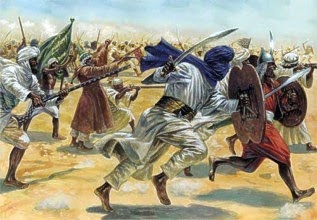How serious a threat is IS? by Muhammad amir rana
THERE was nothing new and surprising in the recent official statements, including those made by the foreign affairs and national security adviser Sartaj Aziz, that the Islamic State (IS) poses no serious threat to Pakistan. The statements nevertheless reflect the traditional, simplistic view of internal security taken by government officials.
Such viewpoints originate from a weak and superficial understanding of the threats facing Pakistan`s security and stability. The conventional security approach in Pakistan to comprehend and encounter insecurity and violence is confined to two strands of threats: sectarian violence and tribal militancy.
Surprisingly, both Pakistani state and society, which have long remained in a state of denial and confusion about the Pakistani Taliban, took more than a decade to realise the threat posed by tribal militancy.
The threat perception about foreign terrorist groups has been the worst. Although the footprints of Al Qaeda had been identified in major attacks in Pakistan, the terrorist group was not considered important by the security apparatus and was always thought of as part of a global problem and as America`s responsibility.
Thepersistingstateofdenialaboutthepresenceof IS in Pakistan and the failure to foresee and encounter its impact on the country`s militant landscape will compound the problem. The announcement by IS of its organisational structure for Pakistan and Afghanistan, which it describes as `Khorasan province`, is a significant development in many ways.
Many groups and individuals from the region had announced their allegiance to Abu Bakr al-Baghdadi, but IS has formally accepted the allegiance of Hafez Saeed Khan, a former leader of the Tehreek-i-Taliban Pakistan from Orakzai Agency, and appointed a former Afghan Taliban leader Mullah Abdul Rauf Khadim as his deputy. All those who had announced their allegiance to Baghdadi now have an obligation to accept Hafiz Saeed as their leader and to pool their resources to strengthen the so-called province of Khorasan.
Of course, this is a different organisational model from the ones militant groups in Pakistan andAfghanistan have been following. Despite their ideological and political bonds and operational alliances, militant groups in this region tend to keep their independence intact. A strict hierarchical control and command system will have certain security implications.
IS`s regional chapter could appoint local commanders across Pakistan and Afghanistan. They would try to absorb smaller militant groups thus raising the threat of large-scale coordinated attacks in both countries. However it remains to be seen how the local groups and commanders will follow and adapt to the strict IS organisational framework.
Additionally, violent confrontation between IS affiliates and other major militant groups operating in the region such as Al Qaeda, the Tehreek-i-Taliban Pakistan, Jamaatul Ahrar and the Afghan Taliban cannot be ruled out. If IS achieves some visible success in the region, it will certainly earn the wrath of major groups, which have a history of not tolerating emerging groups.
The IS factor has provided a lifeline to militant groups in the region. Groups that were not happy with Al Qaeda`s operational strategies are now more attracted to IS. Their frustration with Al Qaeda was mainly due to the conviction that their ultimate objective of establishing an Islamic state and system could not be achieved only through terrorist attacks.
The IS model showed them the importance of controlling territory in order to project and establish power on the ground.
It is probably due to the increasing influence of IS over Pakistani and Afghan terrorist groups that Al Qaeda for the first time has opened its doors to local groups and individuals. Before the significant strategic change, at Al Qaeda`s core was an exclusive club of Egypt-, Saudi-, Yemeniand Libya-origin militants.
This environment of competition among major terroristgroupscanintensifythreatsinthecountryandthe region.
The argument that IS has no space in Pakistan and Afghanistan is based on two perceptions. First, the IS is a Salafi brand and the groups in this region are mainly following the Hanafi-Deobandi tradition andwill not tolerate groups like the former. This is no more a valid question or concern among terrorist groupsas theirideologicalboundarieshaveexpanded to a point where the four traditions of Sunni Islam are acceptable and usually do not cause any confrontation among them. It is also a fact that foreign groups, mainly Al Qaeda, have already transformed local militant groups in many ways with the latter absorbing many Salafi tendencies.
The second argument that the local militant groups are under Mullah Omar`s allegiance and therefore will be hardly attracted towards IS has already been challenged in Afghanistan. IS rejects nationalism and considers the Afghan Taliban part of the religious-nationalist movement. Members of the Afghan Taliban, who have weal< nationalist tendencies and are more inclined towards a `purified` ideological goal, could initiate such a debate in the group`s ranks.
While defections cannot be ruled out, it is unclear how IS will impact the Afghan Taliban movement, particularly when Mullah Omar wants to establish an Islamic emirate in Afghanistan, while Baghdadi wants to extend his Islamic state to the whole world.
Notwithstanding IS`s aspirations and local groups inclination towards IS, Al Qaeda is still strong in the region and enjoys the role of ideological, operational and strategic partner of local militant groups in Pakistan and Afghanistan.
The argument that IS may not make such inroads in Pakistan as it has in Iraq and Syria does hold water.
The two situations are different, and the state and security structures of Pakistan can tackle worst-case scenarios. But the issue is how to avoid such emerging scenarios, particularly when IS can create the security threats by exploiting its links with other groups.
IS is a new destabilising actor which has entered Pakistan. The local groups are attracted to the model it has provided. IS also knows the value of the terrorist infrastructure that exists in Pakistan and Afghanistan. The radical sentiments and tendencies in the masses further make this region lucrative for thegroup.• The writer is a security analyst.
 |
Islamic states MAP |
.jpg)



Comments
Post a Comment